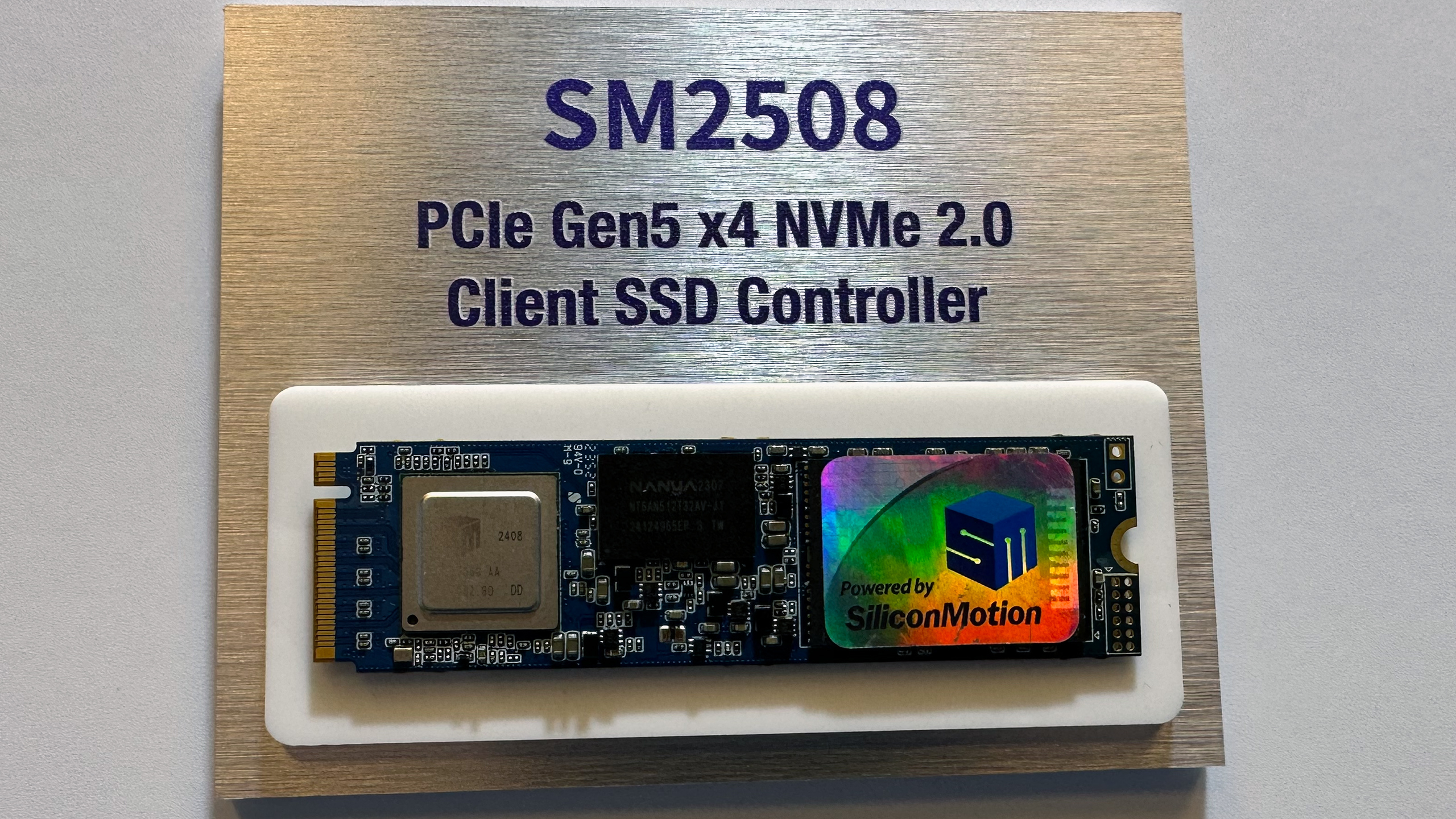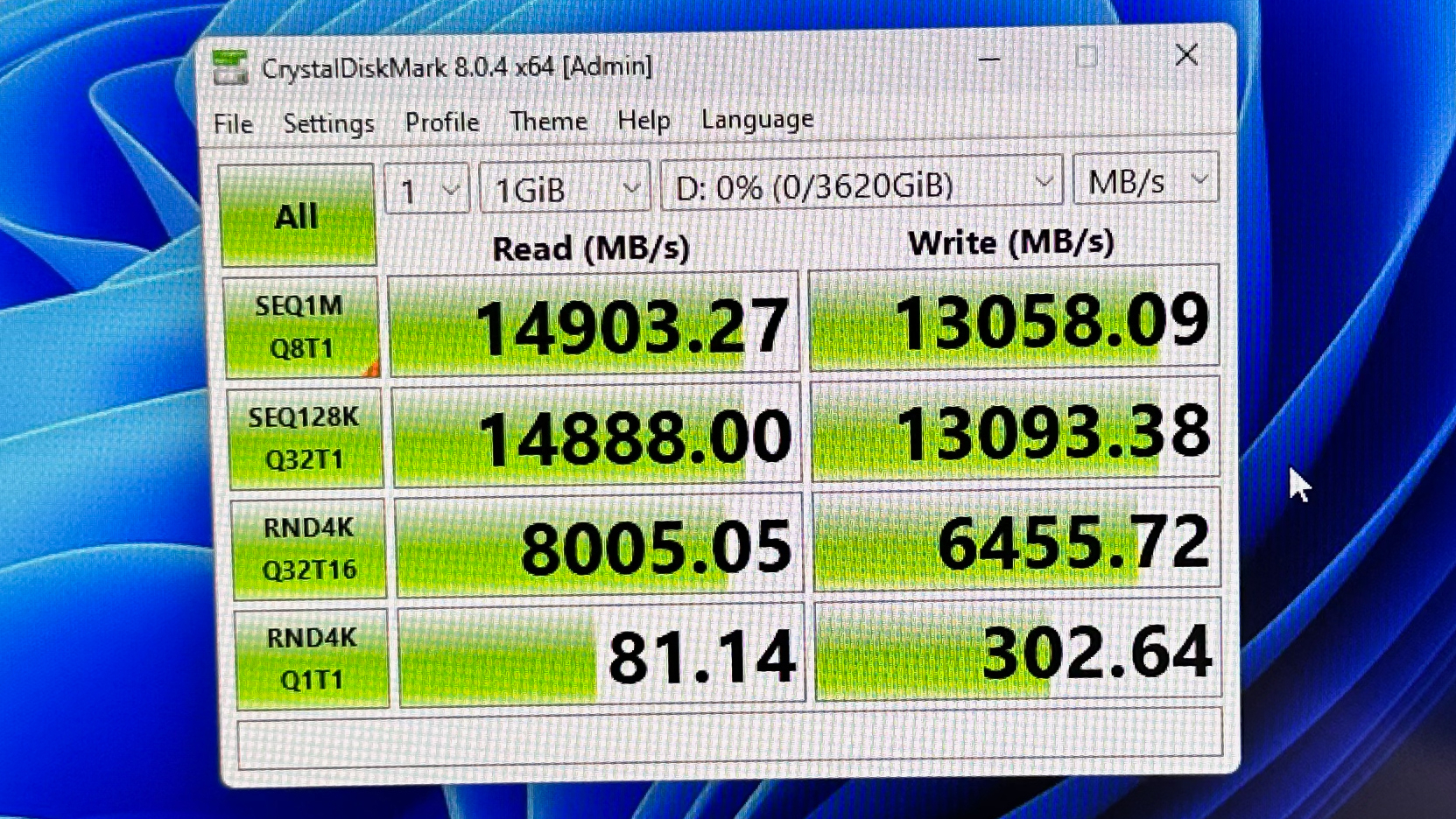
Silicon Motion re-emphasized its plans to release the SM2508 platform for PCIe Gen5 client SSDs by the end of the year and revealed some additional details about the controller and its expected performance.
The Silicon Motion SM2508 SSD controller is based on four Arm Cortex-R8 cores, which makes it one of the most capable controllers on the market now — even when compared to some of the enterprise-grade platforms. The chip boasts eight NAND channels with 32 CE targets, each supporting interface speeds of up to 3600 MT/s, and can achieve sequential read and write speeds of up to 14.5 GB/s and 14 GB/s, along with random read and write speeds of up to 2.5 million IOPS.
At least on paper, the SM2508 offers considerably higher random performance than Phison's PS5026-E26.

Another key aspect of the SM2508 is that it is made on TSMC's N6 process technology, which allowed the company to reduce its peak power consumption to around 3.5W. According to the company, drives based on this controller will consume around 7W of power under loads — lower than that of existing competitors.
At present, SMI and its partners are polishing off the firmware of the SM2508 SSD controller and are qualifying it with various types of memory, including 3D TLC NAND for high-performance SSDs. The drive can support 3D QLC NAND as well, though it remains to be seen when SSD makers will adopt this type of memory for high-performance PCIe Gen5 drives.
Speaking of memory, the fastest 3D NAND flash memory devices on the market today (at least in more or less significant quantities) have a 2400 MT/s interface. Using such memory is essential to fully saturate a PCIe 5.0 x4 interface and achieve sequential read/write performance between 13 and 14 GB/s. The support for a 3600 MT/s ONFI/Toggle DDR interface will allow for the building of higher-end SSDs without using numerous memory devices, which is critical as next-generation 3D TLC devices have capacities that start at 1TB and get even bigger.







